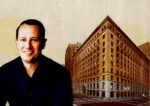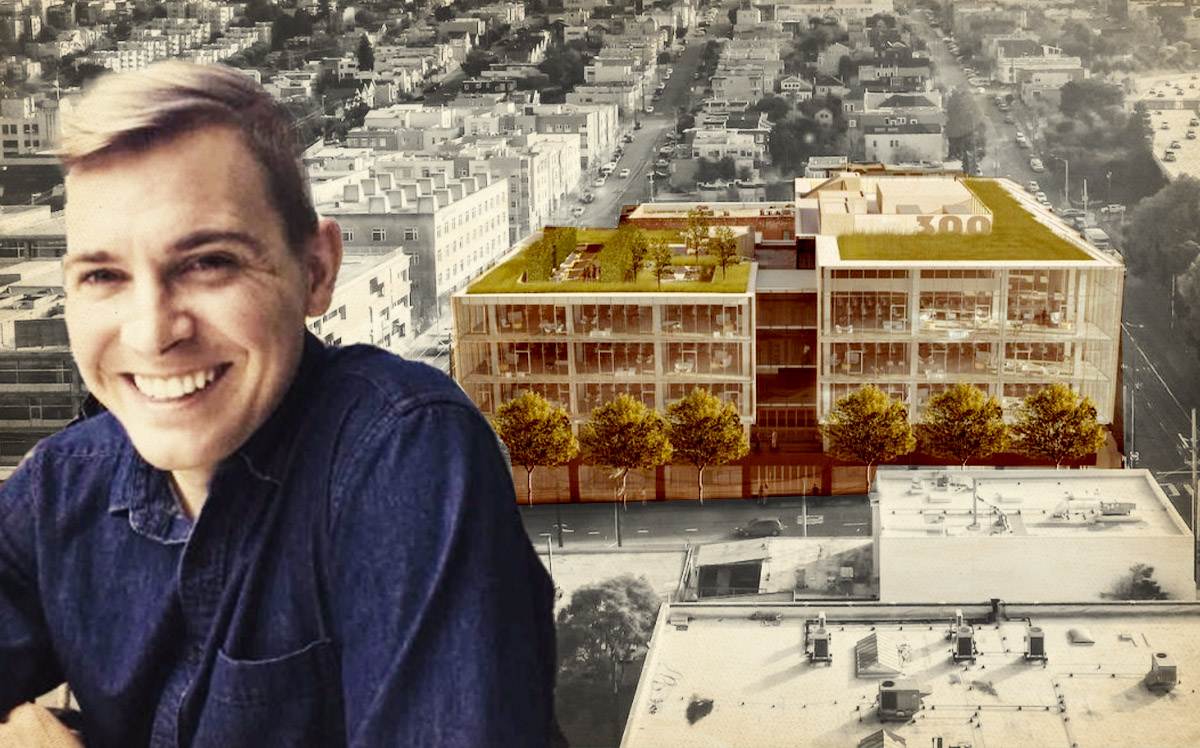Spear Street Capital hopes that “technology creep” in the manufacturing industry will make its new San Francisco building a hit among companies searching for more updated facilities to develop their robotics, VR wearables or autonomous cars, according to Spear Street Vice President Ethan McCall.
Calling the Design District build at 300 Kansas Street the first “advanced” ground-up R&D facility in San Francisco, McCall said Spear Street researched the market before it bought the 0.7-acre site in 2019, and found that the city’s often-century-old industrial spaces were lacking elements such as extra-tall clearances, high-wattage electrical systems and significant ventilation capabilities that its South Bay equivalents have had for decades.
The “genesis for the building,” he said, was the idea that it would be “really interesting to take the functionality that you find in 1970s Silicon Valley R&D product and reinvent that in a modern and vertical urban format.”
The finished building, which recently topped out, will have 150,000 square feet over six floors. The ground, first and second floors will all allow for vehicle access, with the lowest level the only dedicated parking garage. The floor-to-slab heights range from 13.5 feet to 25 feet on the top floor, which will have a mezzanine level over a portion of the nearly 30,000-square-foot space and have the easiest access to the rooftop deck and garden. The building is LEED Gold certified and will be one of the first all-electric, zero-carbon core and shell buildings in the city.
McCall would not say what the company has spent thus far on demos at the former two-story showroom and creating a six-level tech-centered R&D building, but according to public records the company purchased the property overlooking the I-80 and 101 freeways in September 2019 for $21.5 million. The price included permits to create a six-story structure in a location zoned for PDR, or the production, design and repair sectors. A $98 million construction loan followed in August 2021 with a ground-breaking in October of that year.
Newmark is representing the building but no leases have been signed yet, McCall said. He expects interest to pick up now that the building has topped out. He said the warm shell delivery is expected in April, with tenants moving in this fall. While traditional office landlords have been enticing tenants by building out spec suites and taking on other tenant improvement costs, McCall said that strategy doesn’t make sense in a building which is designed to speak to a wide range of research and manufacturing industries that could have very different needs.
“It’s our belief that we’re providing that base level infrastructure and utility and someone is then going to come and layer their bespoke TI on top and invest into the space and commit to the building long term because it’s exactly what they need for their R&D and lab work,” he said.
Newmark did not reply to requests for comment on interest in the building and the strength of the industrial market. In its fourth-quarter 2022 report, JLL said that a lack of new R&D supply is constraining the city’s ability to stay competitive compared with surrounding markets.
“San Francisco can miss out on some of the employment-generating businesses who would prefer to operate within the city, but will need to seek space outside of the city simply due to a lack of supply,” said JLL agent Alexander Quinn via email, citing low ceiling clearances, inefficient docking facilities and inadequate power capabilities as a few of the issues R&D groups have with the current inventory.
He also said that PDR jobs, which includes most biotech, are largely in-person positions and therefore trends toward remote work in other industries “do not shave off demand” for R&D space.
The current office market “is not how we anticipated” when the company acquired the site in 2019, said McCall. But the building has benefited from the fact that the work done by the companies it is targeting mostly occurs in person.
“It’s hard to have a CNC machine in your living room,” he said, referring to the common computer numerical control industrial tool.
He said naming rights for the freeway-facing building would be competitive and are not tied to leasing a particular floor of what is for now still called 300 Kansas.
“Everyone’s going to want it. So it is a bit of a leasing consideration,” he said. “These things typically depend on who’s the largest tenant in the building. Obviously, if there’s one tenant, that makes for an easier conversation, but that’s part of the negotiation with future tenants in the building.”
McCall has heard the argument that San Francisco’s R&D days are in its past, not its future. But he said Spear Street’s research shows that top-tier software and hardware engineering talent is still in San Francisco, they just “hadn’t really had a home yet.”
“I continue to believe in the short, medium and long term that the innovation ecosystem that exists in the Bay Area is going to continue to draw that top talent,” he said. “I do think that will lead to more company formation and help get the city back on the right track.”
Read more


